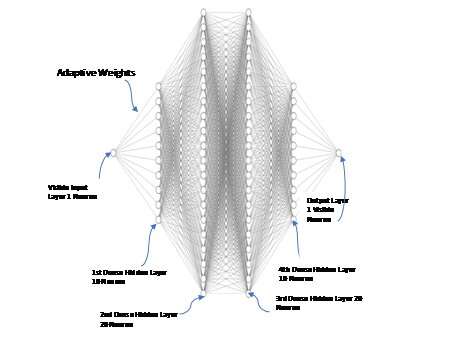Prediction of optical constants and bandgap energy of 3D nanonetwork silicon

In a new publication from Opto-Electronic Advances, Shreeniket Joshi and Amirkianoosh Kiani from Ontario Tech University, Ontario, Canada, discuss hybrid artificial neural networks and analytical model for prediction of optical constants and bandgap energy of 3D nanonetwork silicon structures.
This study introduces a reliable method to determine optical properties for novel silicon thin films (nanomaterial). Silicon thin films were deposited on glass by bombarding silicon wafers with pulsed laser beams. Finding optical properties of novel nanomaterials is challenging as limited experimental data is available. The existing models for finding optical properties were found to be complex and prone to errors, this study proposes a new method of using analytical models with artificial neural networks. The purpose of using artificial neural networks was to develop a mathematical function to predict optical constants for novel thin films. This method proposed was found to be 95 percent accurate.
The research group of Dr. Amirkianoosh Kiani from Ontario Tech University proposed this study to find optical properties of novel silicon thin films and the method was validated with conclusive proof to be accurate and reliable. For transparent novel materials, optical properties can be determined using experimental data for transmittance and reflectance. However, it's challenging to do the same for opaque materials as in this case only reflectance data is available. This study can be used to establish a mathematical relation between the available experimental data and shows promising potential for predicting optical properties for opaque materials from reflectance data alone.
Further, the optical properties determined for the novel silicon thin film discussed in this study was found to have an energy band gap of 1.648, this value is close to materials used for harvesting solar energy. As silicon thin films have a phenomenal surface area, a material with this energy band gap can prove to be highly efficient in solar applications. The research group also intends to use this method for exciting materials like titania, gold nanoparticles, etc. which are used in biomedical applications.
More information: Shreeniket Joshi et al, Hybrid artificial neural networks and analytical model for prediction of optical constants and bandgap energy of 3D nanonetwork silicon structures, Opto-Electronic Advances (2021). DOI: 10.29026/oea.2021.210039
Provided by Compuscript Ltd




















